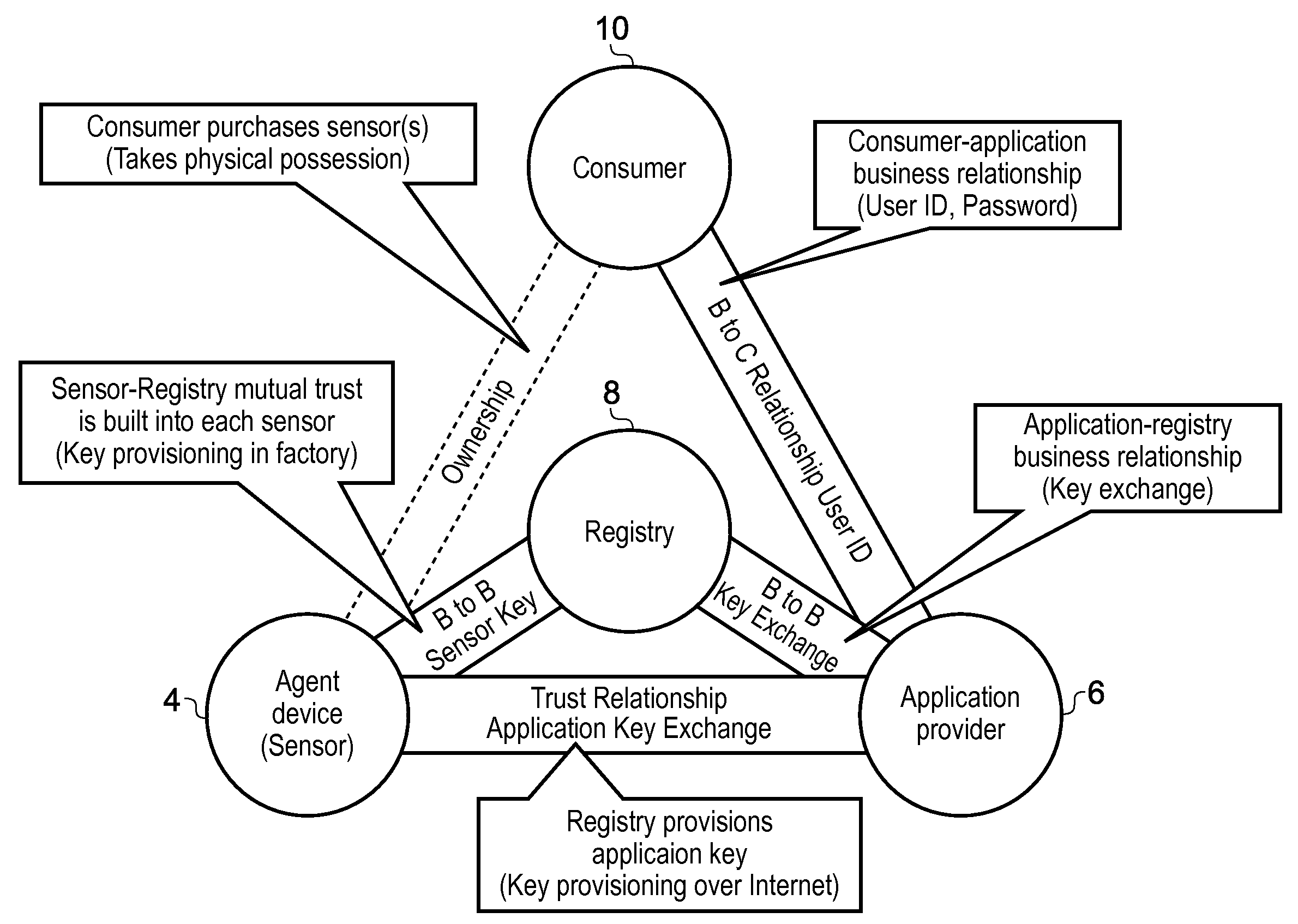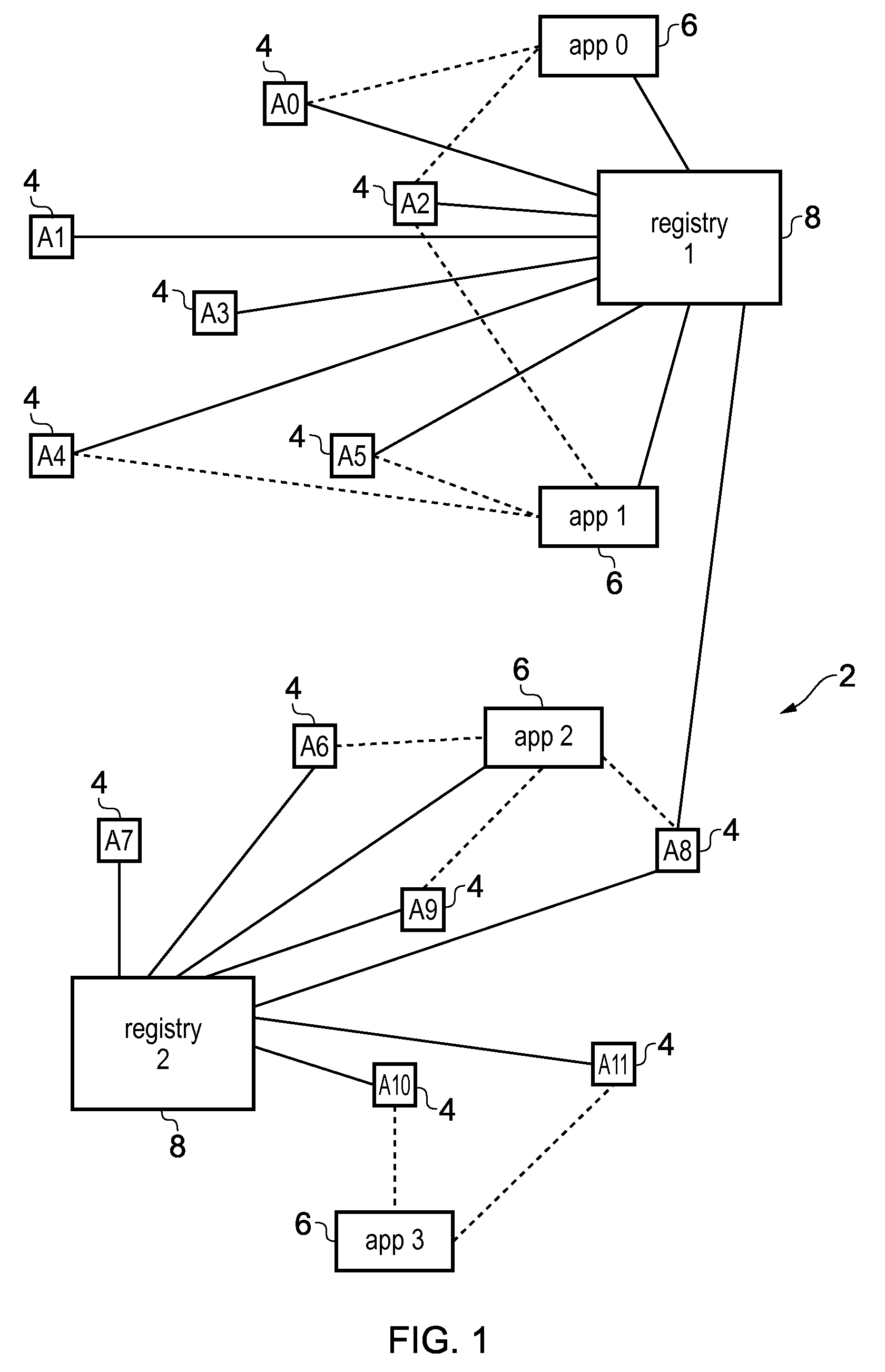Method for assigning an agent device from a first device registry to a second device registry
a technology of agent devices and registry keys, applied in the field of data processing, can solve the problems of significant increase in achieve the effects of reducing the cost of the agent device, ensuring trust, and simplifying the resources of the agent devi
- Summary
- Abstract
- Description
- Claims
- Application Information
AI Technical Summary
Benefits of technology
Problems solved by technology
Method used
Image
Examples
Embodiment Construction
[0083]FIG. 1 illustrates an example of a system 2 comprising of a number of agent devices 4, application providing apparatuses 6 and registry apparatuses 8. The application providing apparatuses 6 may comprise any device which provides a cloud service or executes an application program using data gathered from one or more agent devices 4 and / or issues commands for controlling one or more agent devices 4. The agent devices 4 may be any device which gathers data for transmitting to an application providing apparatus 6 or which is controlled by the application providing apparatus 6. For example, the agent devices 4 may be connected devices in the Internet of Things (JOT), such as wireless sensors and actuators. Although the agent devices 4 can comprise larger scale processing devices such as a tablet computer or mobile telephone, often the agent devices 4 may comprise relatively small scale devices which perform only a limited set of tasks, such as sensors collecting sensing data and f...
PUM
 Login to View More
Login to View More Abstract
Description
Claims
Application Information
 Login to View More
Login to View More - R&D
- Intellectual Property
- Life Sciences
- Materials
- Tech Scout
- Unparalleled Data Quality
- Higher Quality Content
- 60% Fewer Hallucinations
Browse by: Latest US Patents, China's latest patents, Technical Efficacy Thesaurus, Application Domain, Technology Topic, Popular Technical Reports.
© 2025 PatSnap. All rights reserved.Legal|Privacy policy|Modern Slavery Act Transparency Statement|Sitemap|About US| Contact US: help@patsnap.com



